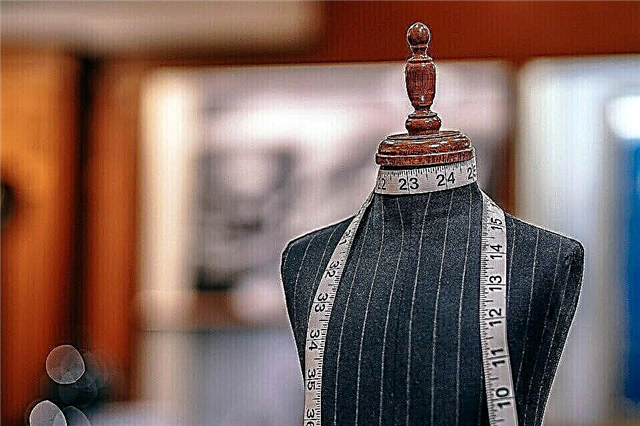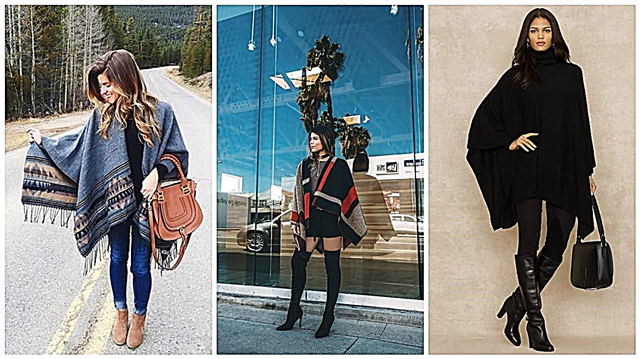CPW (Cost per Wear), or the cost of socks, is a concept that allows you to evaluate the real value of each item. A bit more about what CPW is and how to calculate it.

What is a CPW?
The phrase Cost per Wear (abbreviated CPW) can literally be translated as "Cost of one sock" or "Cost of one donning." CPW technique allows you to evaluate the real value of each piece of clothing. This method is based on calculations of how much this or that thing is calculated per one output, and as a result allows you to evaluate how profitable it will be to invest in a particular garment.
Slow fashion: what it is and why you need it
How to calculate CPW?

Cost per Wear is calculated as follows: the cost of a thing is divided by how many times you put on this thing.
For example, let's calculate the Cost per Wear of an inexpensive acrylic sweater, for example, for 1,000 rubles, and the Cost per Wear for a cashmere sweater, say, for 10,000 rubles. The price of sweaters differs 10 times - let's compare which of the purchases will be more profitable.

CPW Acrylic Sweaters:
Of course, acrylic acrylic is different, but, as a rule, inexpensive acrylic knitwear quickly loses its shape, becomes covered with spools and acquires an unpresentable appearance. Suppose we put on our sweater 15 times, washing it regularly - it is very likely that after that it will become unusable.
So: 1000 rubles / 15 toe = 66.67 p.That is how much one sock, or CPW, of an inexpensive sweater will cost.
CPW cashmere sweaters:
Cashmere holds its shape better, retains a decent look longer, as a rule, it requires rarer washes or cleanings. With proper care, you can wear it for years - it is very likely that over the years we will be able to go out in it 150 or 200 times, on average we take 175.
So: 10,000 rubles / 175 socks = 57.14 p.
It turns out that buying an expensive sweater for 10,000 rubles will be more profitable than a cheap one for 1000 rubles.
Of course, our calculations are rather hypothetical: they do not take into account, for example, the cost of funds for washing cashmere or the price for its dry cleaning. However, this does not take into account the time that we spend searching for 10 cheap sweaters that we would have to buy in return for one more expensive one, and the pleasure of wearing high-quality cashmere compared to acrylic.

Often, the calculation of Cost per Wear clearly shows that high-quality basic things are an investment more profitable than their cheaper and lower-quality counterparts. But calculating CPW can be useful, not only deciding to buy an expensive high-quality item, but also considering whether to take “this strange but very cheap t-shirt” on sale. A witty thing or a thing bought in a “sale fever” may be appropriate only for one season, and put on 1-2 times: despite its low price, the real cost of the sock will be impressive.
Separately, it is worth mentioning about CPW things for special occasions, for example, evening dresses: most often such a dress is expensive and takes only a few walks (or even once), and CPW is very high - but the situation is worth not thinking about the benefits.
We compose a basic wardrobe: 12 necessary items
Do-it-yourself CPW

For do-it-yourself clothes, calculating CPW is a little harder. In the price of a thing you need to include the cost of the fabric (if you sew the product’s layout - and the cost of the fabric for the layout), the cost of accessories, threads, the cost of the pattern if you buy it, plus the price of time and effort spent on creating the thing. Objectively assessing the latter is not always easy - but you can rely on the cost of tailor or atelier services. If we consider it very pedantic, the price should include both the purchase and depreciation of equipment (cars, overlocks), and tools (for example, good scissors, etc.), but this is justified rather with large volumes of sewing approaching the thread of the same studio .
For example, count without the last paragraph. Let's say for a dress we bought a piece of fabric 2 m at a price of 1000 rubles = 2000 rubles. Another 300 rubles cost lightning and thread. Pattern cost 110 rubles. We estimated time and efforts spent on cutting and sewing at 4000 rubles. Total dress cost us 2000 + 300 + 110 + 4000 = 6410 rubles. If we wear it, for example, 20 times, the CPW for this dress will be 6410/20 = 320.5 rubles. And if the dress takes root in the wardrobe and is walked, for example, 50 times, its CPW will be 6410/50 = 128.2 rubles.
Photo: artsinbloom.com, theblog.qccareerschool.com, Pixabay



